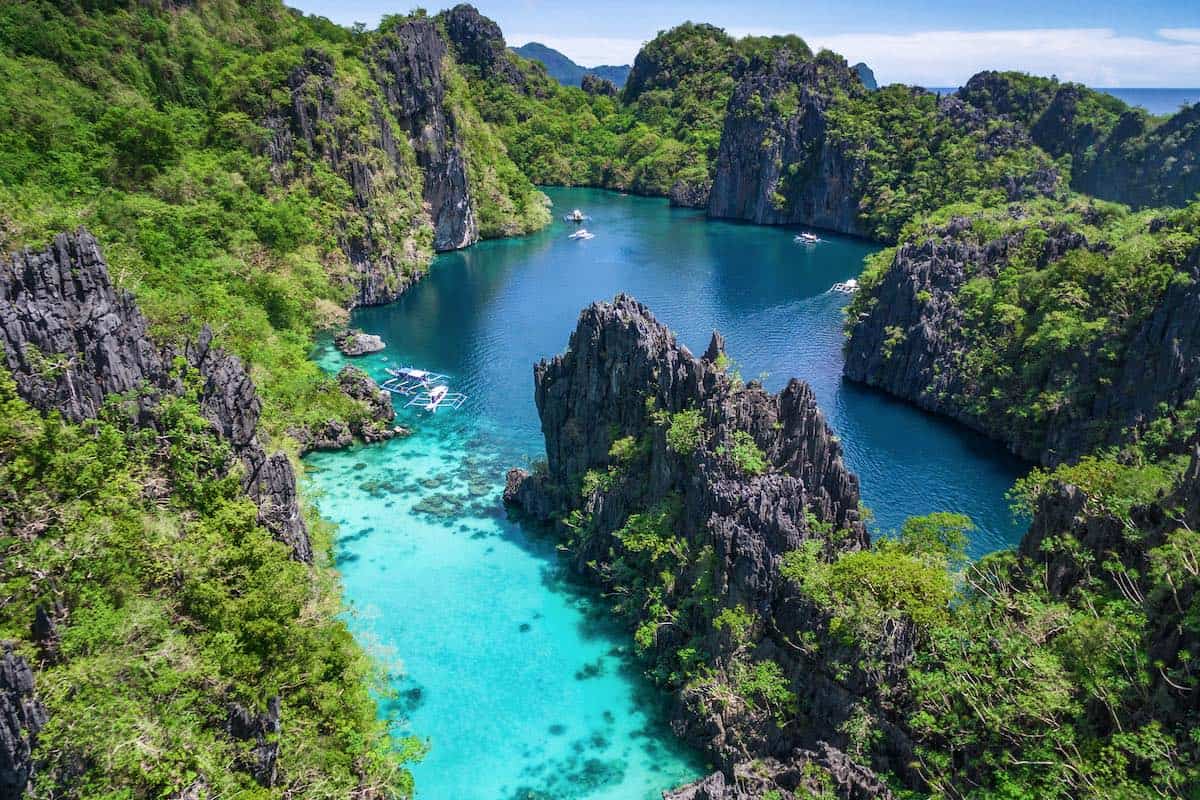The Philippines Finally Reopens
The Philippines is officially reopening for tourism from February 10th for citizens from 150 countries—including the United States, United Kingdom, Australia, New Zealand, and Canada. The Southeast Asia nation had planned to reopen in December 2021, but the Omicron variant pushed things back.
Tourism Secretary, Berna Romulo-Puyat, said in a statement: “(This) will contribute significantly to job restoration, primarily in tourism-dependent communities, and in the reopening of businesses that have earlier shut down,”
The Philippines is popular for its white-sand beaches, hospitality, and gorgeous island destinations. It’s another Asian destination—on top of Thailand, Indonesia, and Singapore—that’s gradually reopening for tourism.
The New Entry Requirements
The Philippines will reopen to citizens of 150 countries that have visa-free access. These include the following nations:
- United Kingdom
- United States
- Japan
- Australia
- Canada
- Italy
- Croatia
- France
- Germany
- Greece
- The Netherlands
- New Zealand
- South Africa
- The U.A.E
- Thailand
- Switzerland
- Spain
- Portugal
- Norway
- Indonesia
You can see the full list of nations allowed to enter the Philippines from February 10 here.
The Philippines will remove quarantine for foreign tourists on February 10. However, travelers will need to be fully vaccinated and test negative for COVID-19.
Full Breakdown Of The Entry Requirements:
- Travelers—regardless of their vaccination status—will require a PCR test taken no more than 48 hours before departure. They will need to bring evidence of this test result.
- Fully vaccinated travelers won’t need to undergo any quarantine measures but must self-monitor symptoms for 7 days after arrival
- Children under 18 don’t need proof of vaccination
- Filipino citizens who are fully vaccinated will no longer need to quarantine on arrival
The Philippines is scrapping its traffic light system. For the previous year, the nation has implemented a traffic light system: green, yellow, and red. Green nations presented the lowest risk for COVID-19, and red nations provided the highest risk.
Instead, The Philippines will move to a vaccination policy, whereby the authorities base arrival requirements on vaccination status—not the state of COVID-19 within the traveler’s home nation.
With that said, The Philippines will maintain its ban on unvaccinated travelers. However, unvaccinated Filipinos can enter the country, but they must provide evidence of a negative PCR test taken within 48 hours of departure and quarantine for 5 days in a facility.
The COVID-19 Situation In The Philippines
The current 7-day case average in The Philippines is 22,058. Still, this is a sharp decrease on the 7-day case average of 33,856 last week. Since the pandemic started, The Philippines has recorded 3.51 million cases and 53,801 deaths. The Philippines has fully vaccinated 52.9% of its entire population after administering 125 million doses.
The COVID-19 Restrictions Within The Country
This is where it gets tricky. The Philippines has different restrictions depending on where you go. In some provinces, traveling is problematic due to COVID-19 entry restrictions. With that said, popular tourism destinations—including Boracay—are making it easier to visit.
What’s more, there are plenty of restrictions in Manila. For example, unvaccinated people cannot ride on public transport. If you intend to use public transport, bring proof of your full vaccination with you.
Furthermore, community quarantine remains in place in many areas. The Philippines is vast; there are over 7,000 islands. As a result, many places are still incredibly restricted. If you’re heading to specific provinces or you’re looking to tour the nation, you’ll need to check restrictions ahead of time. Otherwise, you may end up very disappointed.
Although the country is reopening, traveling within the nation is far from back to normal. You should prepare yourself accordingly.
Final Thoughts
Asian destinations—after two years of closure and strict entry restrictions—are reopening for tourism. Hopefully, as this year progresses, Asia opens for everyone reading this.

